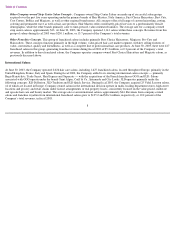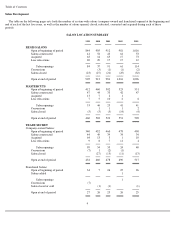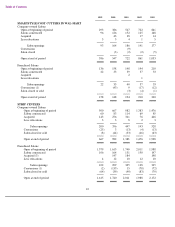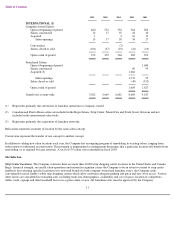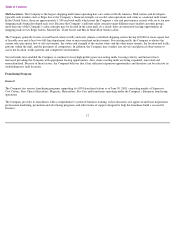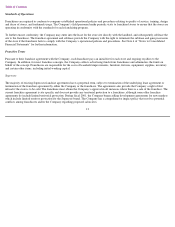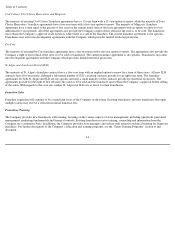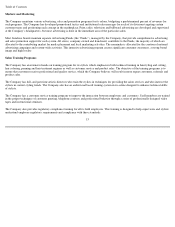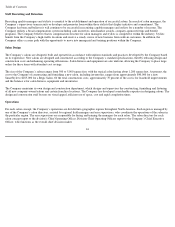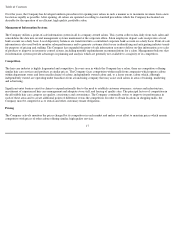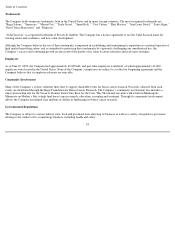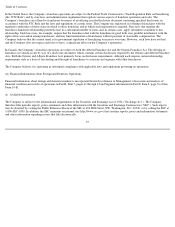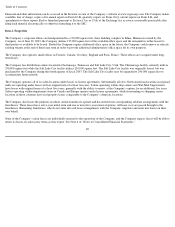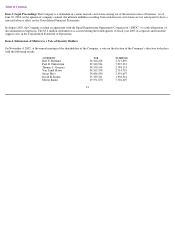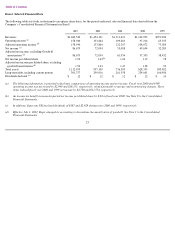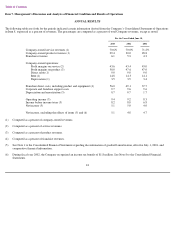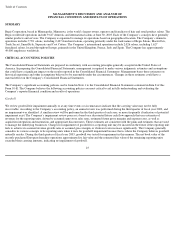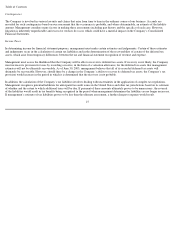Supercuts 2003 Annual Report Download - page 20
Download and view the complete annual report
Please find page 20 of the 2003 Supercuts annual report below. You can navigate through the pages in the report by either clicking on the pages listed below, or by using the keyword search tool below to find specific information within the annual report.
Table of Contents
Over the years, the Company has developed uniform procedures for opening new salons in such a manner as to maximize revenues from a new
location as rapidly as possible. After opening, all salons are operated according to standard procedures which the Company has learned are
desirable for the operation of an efficient, high quality, profitable salon.
Management Information Systems
The Company utilizes a point-of-sale information system in all its company-owned salons. This system collects data daily from each salon and
consolidates the data into several management systems maintained at the corporate office. Salon employees deposit cash receipts into a local
bank account on a daily basis. Local depository balances are transferred into a centralized corporate bank account on a daily basis. Point-of-
sale
information is also used both to monitor salon performance and to generate customer data for use in identifying and anticipating industry trends
for purposes of pricing and staffing. The Company has expanded the point-of-sale information system to deliver on-line information as to sales
of products to improve its inventory control system, including monthly replenishment recommendations for a salon. Management believes that
its information systems provide advantages in planning and analysis which are generally not available to a majority of its competitors.
Competition
The hair care industry is highly fragmented and competitive. In every area in which the Company has a salon, there are competitors offering
similar hair care services and products at similar prices. The Company faces competition within malls from companies which operate salons
within department stores and from smaller chains of salons, independently owned salons and, to a lesser extent, salons which, although
independently owned, are operating under franchises from a franchising company that may assist such salons in areas of training, marketing
and advertising.
Significant entry barriers exist for chains to expand nationally due to the need to establish customer awareness, systems and infrastructure,
recruitment of experienced hair care management and adequate store staff, and leasing of quality sites. The principal factors of competition in
the affordable hair care category are quality, consistency and convenience. The Company continually strives to improve its performance in
each of these areas and to create additional points of difference versus the competition. In order to obtain locations in shopping malls, the
Company must be competitive as to rentals and other customary tenant obligations.
Pricing
The Company actively monitors the prices charged by its competitors in each market and makes every effort to maintain prices which remain
competitive with prices of other salons offering similar, high quality services.
17



